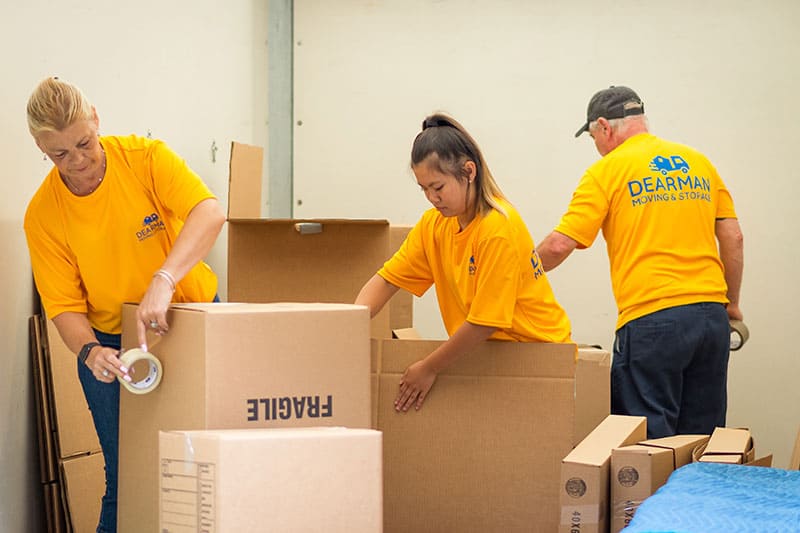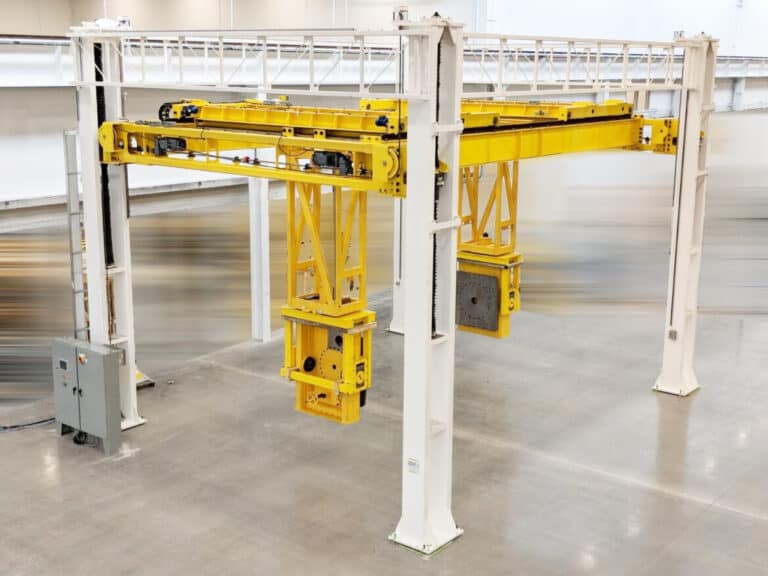Simple methods for achieving customs clearance success in shipping overseas
Comprehending the Inclusions of moving and Freight Forwarding on the planet of Domestic and International Shipping
Steering via the intricacies of moving and Freight forwarding can be difficult. Both procedures include unique procedures and needs that are crucial for effective transport. Recognizing the differences in logistics, documentation, and risk monitoring is necessary for people and companies alike. This understanding can significantly impact the effectiveness and security of deliveries. Nevertheless, numerous are not aware of the certain components that affect the general experience and end results. What elements should one take into consideration to guarantee a smooth transition?
The Fundamentals of moving and Freight Forwarding
moving and Freight forwarding are basic elements of the international logistics industry. They assist in the transfer of goods and individual belongings across worldwide and residential boundaries. moving primarily includes the relocation of families or people, incorporating property and commercial requirements. It typically includes packaging, loading, delivering, and unloading products at the destination. On the other hand, Freight forwarding is concentrated on the delivery of goods, typically wholesale, using different transport modes, such as air, land.freight, or sea forwarders work as intermediaries, collaborating logistics to ensure timely distribution while maneuvering with complex guidelines and custom-mades treatments. Both procedures require mindful preparation, organization, and communication to ensure effectiveness and lessen interruptions. Comprehending these fundamentals is important for any person involved in logistics, as they prepared for even more innovative aspects of shipping and transportation administration.
Secret Elements of Freight Forwarding Solutions
Freight forwarding solutions include numerous crucial components that guarantee smooth transportation of products. Secret obligations of Freight forwarders consist of taking care of logistics, coordinating shipments, and taking care of customs clearance. Furthermore, understanding important shipping documentation is crucial for conformity and reliable activity of cargo.
Freight Forwarder Responsibilities
A reputable Freight forwarder plays an important role in coordinating the transportation of items, guaranteeing that shipments are dealt with successfully and in conformity with regulations. Their duties include different vital jobs, consisting of selecting ideal transportation courses, bargaining Freight prices, and handling logistics. They work as middlemans in between providers and shippers, guaranteeing that cargo is correctly packaged and labeled for secure transportation. In addition, Freight forwarders track deliveries, giving updates to clients regarding the status and expected distribution times. They likewise analyze and manage threats linked with transport, recommending insurance policy alternatives as required. By facilitating communication and documentation, Freight forwarders simplify the shipping process, reducing possible delays and enhancing overall supply chain effectiveness.
Delivering Paperwork Essentials

Understanding Customizeds Clearance and Documents
Exact documents is vital in the customs clearance procedure, as it assures compliance with different laws. A summary of customizeds regulations highlights the complexities faced by shippers and Freight forwarders. Typical clearance challenges can considerably influence shipment timelines and costs, making understanding this aspect essential for reliable logistics.
Importance of Accurate Documents
Steering via the intricacies of international shipping calls for a keen understanding of customs clearance and the crucial role of paperwork. Exact documents is crucial for ensuring that deliveries abide by guidelines and reach their destinations immediately. Properly prepared files, including costs of lading, commercial invoices, and packaging checklists, assist in smooth communications with customs authorities. Inaccuracies can cause shipment delays, penalties, or perhaps confiscation of goods. Additionally, detailed paperwork aids in tracking shipments and fixing disputes. Subsequently, services took part in moving and Freight forwarding must focus on thorough paperwork methods to browse the complex landscape of global delivery properly. This diligence not just streamlines operations however additionally enhances customer fulfillment by making sure timely shipment.
Customizeds Rules Review
Guiding personalizeds laws is an essential facet of worldwide profession that directly impacts the success of moving and Freight forwarding procedures. Reliable customs clearance needs an understanding of various policies, consisting of tolls, tasks, and import/export constraints. Precise documentation is important, as it ensures compliance with legal needs and helps with the reliable motion of items across borders. Trick records typically include commercial invoices, packaging lists, and bills of lading, which give detailed info concerning the delivery. Additionally, custom-mades great post to read brokers play an important duty in guiding complex policies, functioning as intermediaries in between shippers and personalizeds authorities. By keeping detailed expertise of personalizeds processes, businesses can greatly lower delays and decrease prices connected with worldwide shipping.
Usual Clearance Difficulties
Many obstacles can develop during the customizeds clearance process, usually complicating the motion of goods across borders. One substantial issue is inadequate documentation, which can bring about fines and hold-ups. Exporters and importers should ensure all called for documentation, such as billings, packaging checklists, and certificates of beginning, is total and accurate. In addition, disparities in appraisal can set off scrutiny from custom-mades authorities, leading to additional duties or examinations. Language obstacles may additionally posture difficulties, as miscommunication can bring about misconceptions concerning regulations. In addition, modifications in customs policies can produce complication, requiring continuous alertness by carriers. Eventually, getting over these clearance challenges needs thorough preparation and a clear understanding of customizeds requirements to promote smooth global transactions.
Packaging and Classifying Requirements
Typically neglected, packaging and labeling needs play an important function in the delivery process, making certain that items are protected and conveniently identifiable throughout their journey (freight shipping). Correct product packaging safeguards items from damage throughout transportation, while additionally facilitating efficient handling and storage space. Using appropriate materials, such as bubble cover, foam, or sturdy boxes, can stop breakage and loss.Labeling is equally vital. Precise and clear labels communicate crucial information, consisting of the destination, taking care of directions, and contents. Labels have to conform with regulations certain to global and residential delivery, which might consist of harmful materials identification or customs declarations.Moreover, standardized labeling techniques streamline the monitoring process and boost overall logistics effectiveness. By adhering to packaging and labeling requirements, businesses minimize the risk of hold-ups, damage, or misdelivery. Ultimately, these methods contribute considerably to the success of moving and Freight forwarding operations, making certain a seamless delivery experience for all celebrations included
Tracking Deliveries: Significance and Techniques
Effective product packaging and labeling established the foundation for successful delivery monitoring, yet tracking shipments is just as important in the shipping process. Shipment tracking gives real-time visibility, which assists consumers and businesses keep an eye on the development of their items. This transparency improves consumer contentment, because clients can stay educated about distribution timelines and any possible delays.Several techniques assist in efficient tracking. Barcode scanning is an usual method, using unique identifiers to keep an eye on packages throughout their trip. Additionally, GPS technology makes it possible for exact location monitoring, permitting prompt updates and improved logistics management. Lots of delivery business currently use digital systems and mobile applications that offer customers with easy accessibility to tracking information.The value of delivery monitoring can not be overemphasized; it decreases the threat of shed or harmed goods, boosts operational efficiency, and promotes trust fund in between recipients and shippers. As a result, incorporating reliable tracking techniques is crucial for successful domestic and international shipping procedures.
Insurance Options for Your Item
Protecting insurance for products in transportation is a moving and crucial consideration for people and services alike. Insurance coverage choices vary based upon the sort of shipment, worth of products, and particular dangers entailed. Typical kinds include copyright responsibility, which covers loss or damages while in transit, and full-value insurance, providing extensive insurance coverage for the total worth of the goods.Shippers may likewise consider aquatic insurance policy for global shipments, safeguarding against risks linked with sea transportation. It is essential to examine the details demands of the delivery and review the terms and problems of any policy.Furthermore, recognizing exemptions and constraints is essential to prevent potential voids in coverage. Shippers need to involve with insurance policy experts to discover tailored solutions that fit their special scenarios. Eventually, investing in the right insurance can minimize financial threats and offer long distance movers satisfaction throughout the delivery procedure.
Picking the Right moving and Freight Forwarding Service
When picking a moving and Freight forwarding solution, it is vital for services and individuals to very carefully assess their specific needs and priorities. Variables such as the quantity of items, location, and timeline play a considerable role in this decision-making procedure. Investigating various providers is advisable; contrasting their services, rates, and client reviews can disclose beneficial insights.Additionally, it is needed to consider the experience and knowledge of the service provider in dealing with specific kinds of freight, particularly for worldwide deliveries that might involve customizeds clearance. Transparency in prices, including any covert charges, must likewise be scrutinized.Furthermore, examining the degree of customer support offered is vital, as prompt interaction can mitigate issues throughout transit (freight shipping). Validating the accessibility of insurance options guarantees that goods are shielded throughout the delivery procedure. By taking these businesses, steps and individuals can make enlightened choices that align with their logistics needs
Often Asked Concerns
What Kinds of Item Can Be Shipped Worldwide?

Just How Do Shipping Costs Differ Between Various Carriers?
Delivering prices vary significantly in between providers as a result of elements such as solution speed, freight kind, range, and extra solutions provided. Each service provider's pricing design reflects these variables, affecting overall delivery expenses for clients.
Can I Ship Hazardous Products or Perishables?
Shipping harmful products and perishables is subject to stringent regulations. Providers frequently call for specific packaging, labeling, and documentation. Carriers must ensure conformity with worldwide and neighborhood legislations to stay clear of penalties and ensure secure transportation.
What Should I Do if My Shipment Is Delayed?
When encountered with a shipment delay, one need to initially get in touch with the provider for updates. After that, review any notifications got, examine different solutions, and keep all celebrations notified regarding the situation to reduce interruptions.
Exist Weight Boundary for Shipping Containers?
Weight limitations for shipping containers vary depending upon elements like container size and shipping laws. Generally, conventional containers have a maximum gross weight of around 30,000 to 32,000 kgs to guarantee safe transportation and handling. In comparison, Freight forwarding is focused on the shipment of goods, often in mass, making use of numerous transport modes, such as air, land.freight, or sea forwarders act as intermediaries, coordinating logistics to assure prompt shipment while maneuvering through facility policies and customizeds procedures. Trick obligations of Freight forwarders include managing logistics, working with shipments, and managing custom-mades clearance. A trustworthy Freight forwarder plays a necessary function in coordinating the transport of products, ensuring that deliveries are handled successfully and in compliance with regulations. Reliable packaging and labeling established the foundation for effective delivery monitoring, however tracking deliveries is similarly important in the delivery process. Many delivery companies currently offer electronic systems and mobile applications that supply users with easy accessibility to tracking information.The relevance of delivery tracking can not be overemphasized; it decreases the risk of lost or damaged items, enhances functional performance, and promotes trust fund between receivers and shippers.